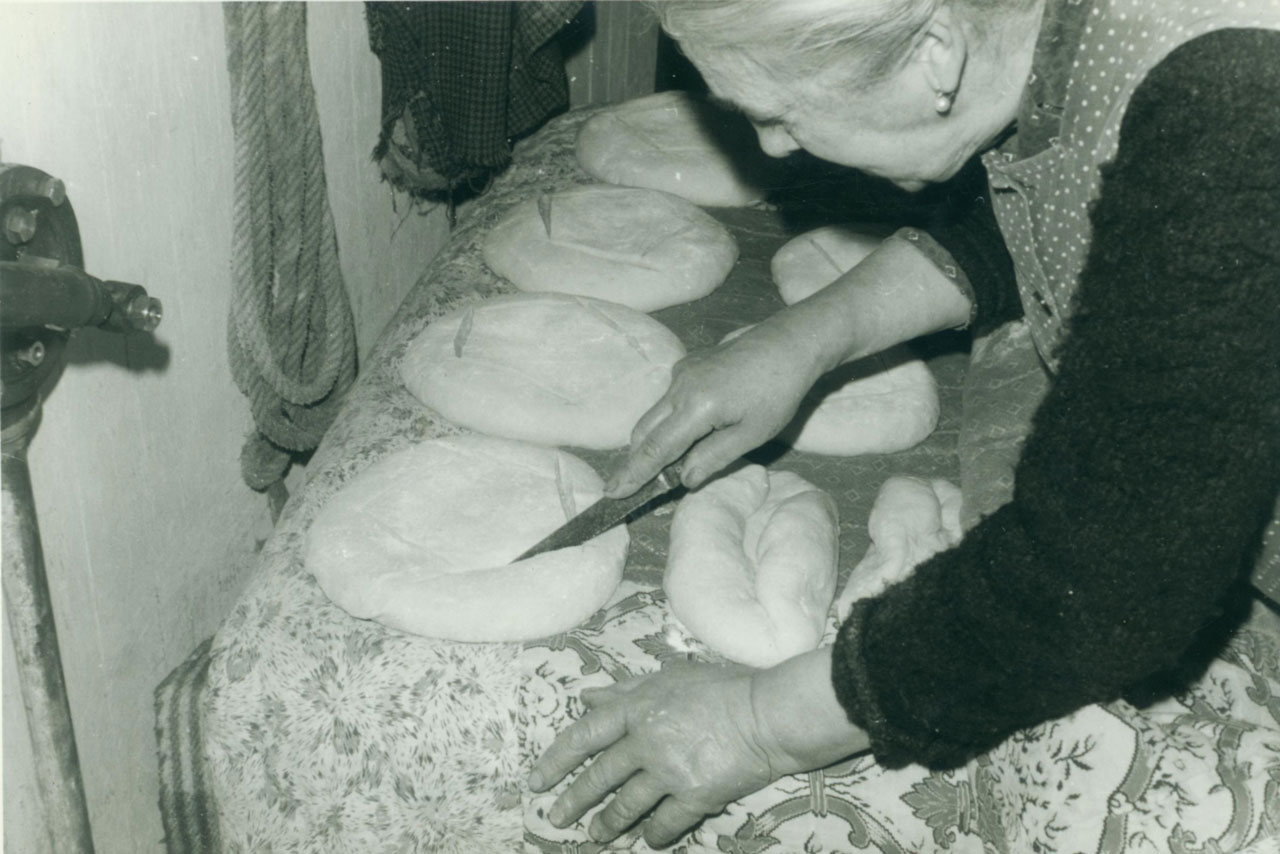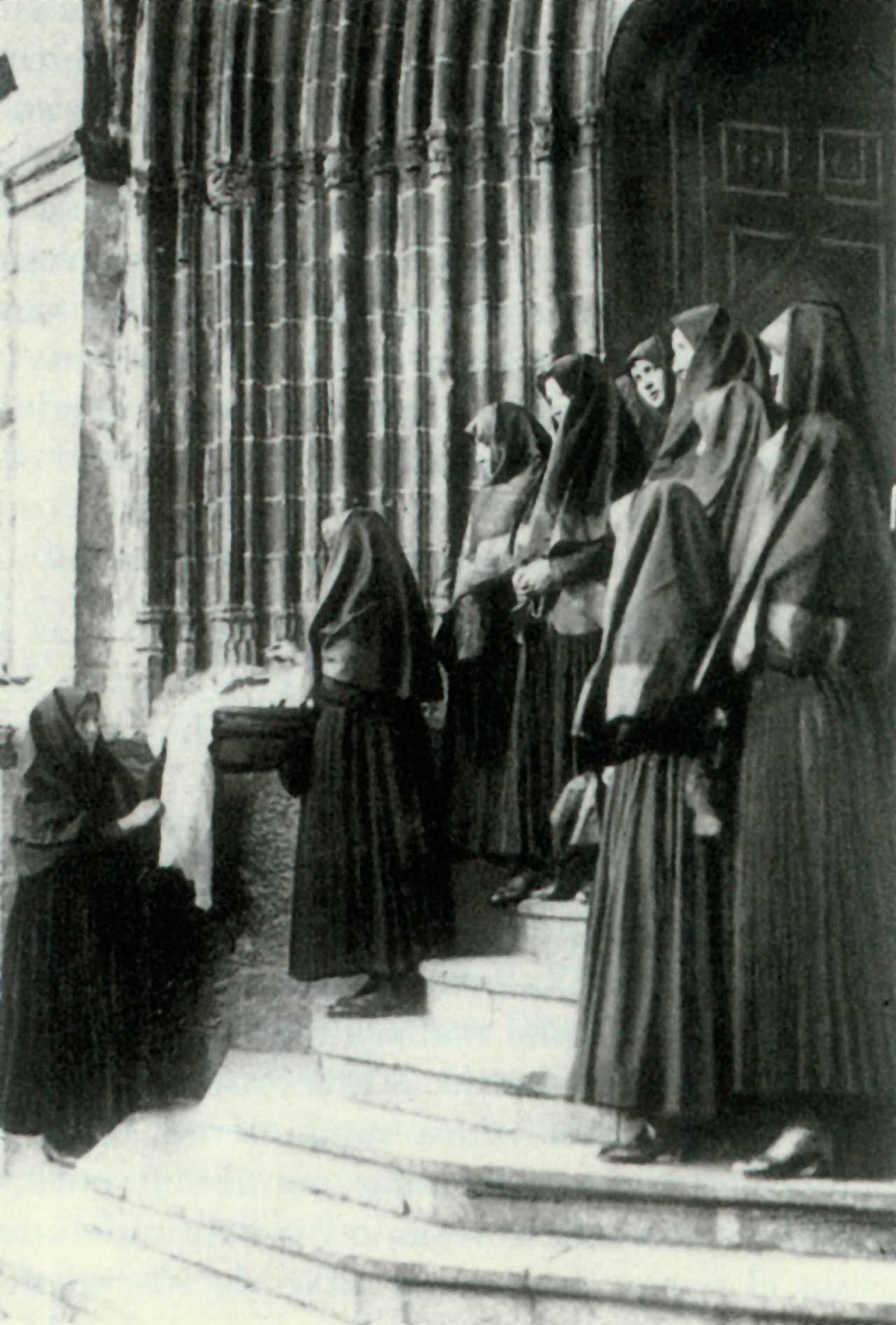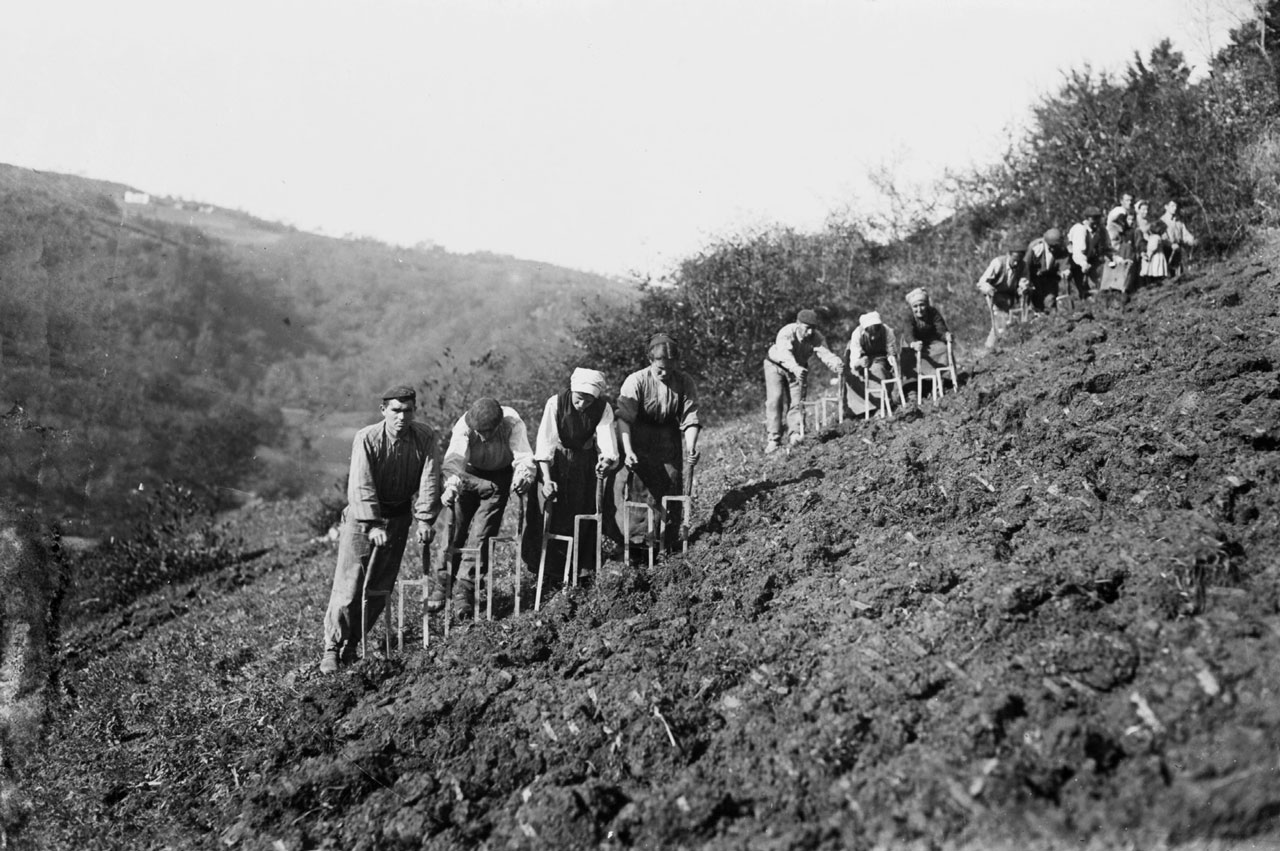Diferencia entre revisiones de «Main Page/en»
De Atlas Etnográfico de Vasconia
| Línea 104: | Línea 104: | ||
====[/atlas/juegos/A-chorro-morro.jpg|Leapfrog jumping. Source: Iñigo Irigoyen, José. Folklore Alavés. Vitoria-Gasteiz: Chartered Government of Álava, 1949.|''Astoka'' <br />One or more participants bend down in a position that is usually called a frog and the others jump over them.||]==== | ====[/atlas/juegos/A-chorro-morro.jpg|Leapfrog jumping. Source: Iñigo Irigoyen, José. Folklore Alavés. Vitoria-Gasteiz: Chartered Government of Álava, 1949.|''Astoka'' <br />One or more participants bend down in a position that is usually called a frog and the others jump over them.||]==== | ||
| − | ====[/atlas/juegos/ | + | ====[/atlas/juegos/Vestidos_y_adornos_vegetales_Egozkue_1967.png|Vegetal clothing and accessories. Egozkue (N), 1967. Source: José Zufiaurre, Etniker Euskalerria Groups.|Akerrak adarrak okerrak ditu, <br />adarrak okerrak akerrak ditu, <br />okerrak adarrak akerrak ditu. <br /><br />''Tongue-twister''||]==== |
====[/atlas/juegos/A-enfermeras-Getxo-1993.jpg|Doctors and nurses. Getxo (B), 1993. Source: Jon Elorriaga, Etniker Euskalerria Groups.|Txikia banintzen, handia banintzen, maiatzerako burutu nintzen. <br />''Riddle''||]==== | ====[/atlas/juegos/A-enfermeras-Getxo-1993.jpg|Doctors and nurses. Getxo (B), 1993. Source: Jon Elorriaga, Etniker Euskalerria Groups.|Txikia banintzen, handia banintzen, maiatzerako burutu nintzen. <br />''Riddle''||]==== | ||
| − | ====[/atlas/juegos/ | + | ====[/atlas/juegos/Umetxo-taldea_Zeanurin_aurrekoa_parrantolarekin_Zeanuri_1920.jpg|Group of children. Zeanuri (B), 1920. Source: Labayru Fundazioa Photograhic Archive: Felipe Manterola Collection.|Children in the traditional society, both in towns and in countryside, only really had the toys that they made themselves. Games were more common than toys, and the latter were just a basis for the former.||]==== |
====[/atlas/juegos/Ninos-con-patinetes-y-triciclos-en-la-Florida.jpg|Children riding scooters and tricycles at Florida Park. Source: Municipal Archive of Vitoria-Gasteiz: Ceferino Yanguas.|Humans play games throughout their lives; however, that activity has a clearly different role for children and adults.||]==== | ====[/atlas/juegos/Ninos-con-patinetes-y-triciclos-en-la-Florida.jpg|Children riding scooters and tricycles at Florida Park. Source: Municipal Archive of Vitoria-Gasteiz: Ceferino Yanguas.|Humans play games throughout their lives; however, that activity has a clearly different role for children and adults.||]==== | ||
| Línea 122: | Línea 122: | ||
====[/atlas/juegos/Asto-astoka-Zeanuri-1920.jpg|Leapfrog. Zeanuri (B), 1920. Source: Labayru Fundazioa Photograhic Archive: Felipe Manterola Collection.|—Arre, arre, <br />mandako, bihar Tolosarako, <br />etzi Panplonarako. <br />—Handik zer ekarriko? <br />—Zapata ta garriko. <br /><br />''Children’s chant''||]==== | ====[/atlas/juegos/Asto-astoka-Zeanuri-1920.jpg|Leapfrog. Zeanuri (B), 1920. Source: Labayru Fundazioa Photograhic Archive: Felipe Manterola Collection.|—Arre, arre, <br />mandako, bihar Tolosarako, <br />etzi Panplonarako. <br />—Handik zer ekarriko? <br />—Zapata ta garriko. <br /><br />''Children’s chant''||]==== | ||
| − | ====[/atlas/juegos/ | + | ====[/atlas/juegos/Zotzetara_Zeanuri_1993.jpg|Drawing of lots. Zeanuri (B), 1993. Source: Ander Manterola, Etniker Euskalerria Groups.|Txirristi-mirristi, gerrena, plat, <br />olio-zopa, kikili-salda, <br />urrup edan edo klik, <br />ikimilikiliklik. <br /><br />''Drawing lots chant''||]==== |
| − | ====[/atlas/juegos/ | + | ====[/atlas/juegos/Velando_el_sueno_1914.png|Watching over the child. Source: Novedades. Donostia, 1914.|Obabatxua lo ta lo, <br />zuk orain eta nik gero; <br />zeuk gura dozun orduren baten, <br />biok egingo dogu lo ta lo. <br /><br />''Lullaby''||]==== |
Revisión del 13:19 11 mar 2020
Old and young husband and wife. Areatza (B), beginning of the 20th century. Source: Rubén de Las Hayas’ private archive.
House and Family in the Basque Country


House and Family in the Basque Country
The aim was to ensure that the family wealth, taken to be the farmstead and its belongings, would be passed on in full or only slightly diminished, and improved if possible, from parents to their offspring.
Family Diet in the Basque Country


Family Diet in the Basque Country
Donde no hay ni pan ni pollos, el horno no está para bollos. If there’s no bread or chicken, you shouldn’t bake rolls.
Children’s Games in the Basque Country


Children’s Games in the Basque Country
Txikia banintzen, handia banintzen, maiatzerako burutu nintzen. Riddle
Traditional Medicine in the Basque Country


Traditional Medicine in the Basque Country
No distinctions between beliefs and empirical cures in the traditional mindset.
Nuclear family. Artea (B), c. 1930. Source: Labayru Fundazioa Photograhic Archive: Felipe Manterola Collection.
Rites from Birth to Marriage in the Basque Country


Rites from Birth to Marriage in the Basque Country
Any bachelor, or spinster, traditionally continued to be linked to the homestead and to be an integral part of the family.
Funeral Rites in the Basque Country


Funeral Rites in the Basque Country
The members of the funeral cortege, relatives of the deceased and neighbours alike, would usually carry offerings of bread and light.
Livestock Farming and Shepherding in the Basque Country


Livestock Farming and Shepherding in the Basque Country
At the end of the Middle Ages, flocks in the Basque valleys converged on the same mountains that are now the main summer grassland used for grazing.
Agriculture in the Basque Country


Agriculture in the Basque Country
Spades, ploughs, rakes, sickles, scythes and threshers were the essential tools for agricultural work.








